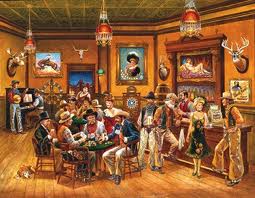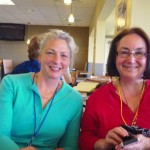In my memoir writing class last night, we discussed how thinking in terms of camera angles can help writers provide a total experience for readers.
Writing Tip for Today: Cinematic scene writing in fiction relies on camera angles to manage the reader. The writer is directing the reader’s attention at all times: Remember this, pay attention to that, this is important. Using camera angles will improve your scene writing techniques in many ways. Here are three:
- Openings: Panorama, Middle Distance or Closeup? As you open your story, you choose how far away or close up the camera starts out. If you decide it’s important to orientate your reader to time & place, you may choose a vista or panoramic shot, starting from far away (EX: The Navajo mesa country sparkled with early morning sunlight.). Then you can zoom in for a closeup to introduce the character. Or you could decide the setting could be anywhere, and choose a closeup to open. (EX: His hands trembled as he cut the bomb’s yellow wire.) Later you zoom out to give the reader a sense of where she is. Choosing the type of camera shot helps you set up the story and manage your reader.
- Scenic Reminders. Many writers draft a scene by first describing the place, then diving into the action with dialogue, etc. Trouble is, if the writer never reminds the reader of the details of the setting, the scenic elements quickly fade away. The result can be a barren set with talking heads. By moving the camera around, you can give quick snapshot reminders of the setting, who else is present or other factors. Learn to weave a sentence or two of this setting reminder around dialogue, action and inner thought. (EX: John leaped out of his desk chair and lunged at his secretary’s throat. The ruckus knocked his framed diploma to the floor, shattering glass.) Now we not only see what John did (Hey, it’s Halloween!), we “see” the office, the chair, the framed diploma and hear the glass breaking.
- Reframe for Crowd Scenes. If you’ve ever watched an old episode of TV’s Gunsmoke, you probably remember a scene where a group of cowboys are in Miss Kitty’s saloon, playing poker around a table. The POV character sits down and has immediate judgments about the others: this one’s a thief, that one’s a drunk, this other guy’s the sheriff. In film the camera switches from face to face (and occasionally ace up the sleeve) and back to the POV. Similarly you can remind your readers that there are x number of people in a scene by switching the reader’s attention to them at different places. (Matt eyed the rest of the players. Old Grady ought to be home tending his farm, not gambling. Poor Festus probably never won a hand in his life. And Black Bart? Well he was just asking for trouble.) Don’t leave your POV character (the camera) in a single static shot.







Lovely post. 🙂 These are all excellent points; I especially love the second. Not only the reader but the writer as well could do with a reminder of the setting. Wonderful advice, thanks for the tips. 🙂 Have a lovely Halloween!
Danielle, Thanks for reading and commenting. I hope the tips help you along your writing journey. Happy Halloween to you too. ~Linda